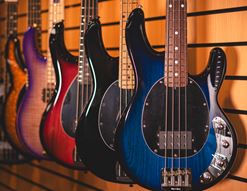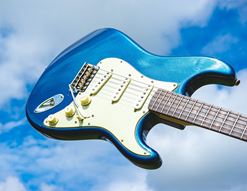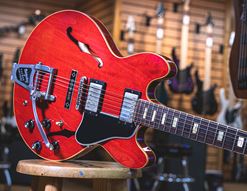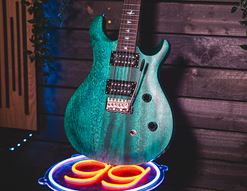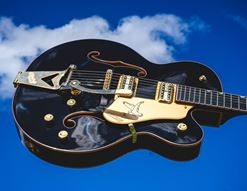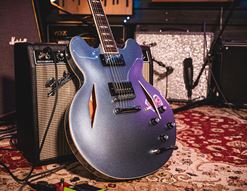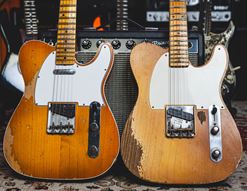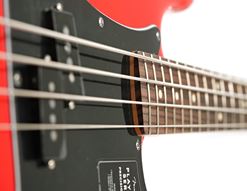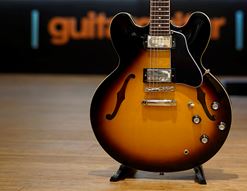The Ibanez RG series stands as an iconic example of alternative guitar design that forever changed the landscape of rock and metal music. From its inception, the RG pushed the boundaries of what was considered traditional, offering players a unique blend of innovation, playability, and tonal diversity.
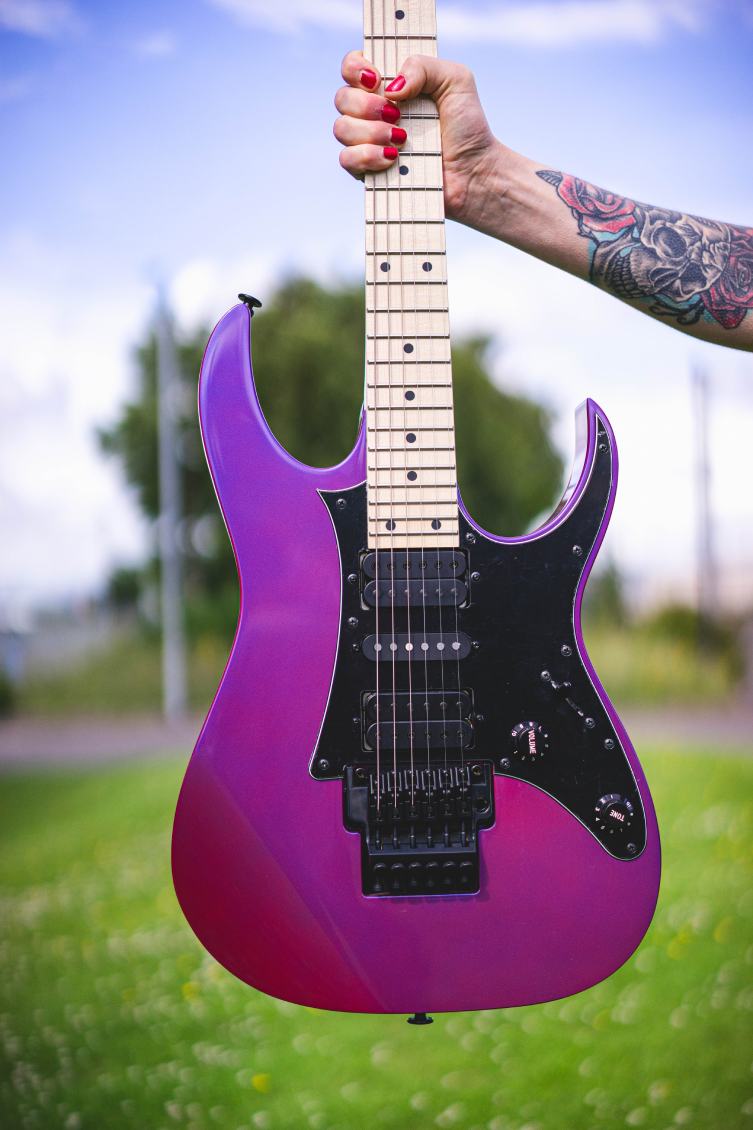
A Signature, Reimagined
The advent of the Ibanez RG series can be viewed as a pivotal moment in the democratisation of virtuosic rock and metal guitar playing. While its origins trace back to the idiosyncratic design of the iconic JEM series - designed with and crafted for Steve Vai - the RG took the advancements spawned by the JEM and offered itself up as THE go-to guitar for Rock and Metal.
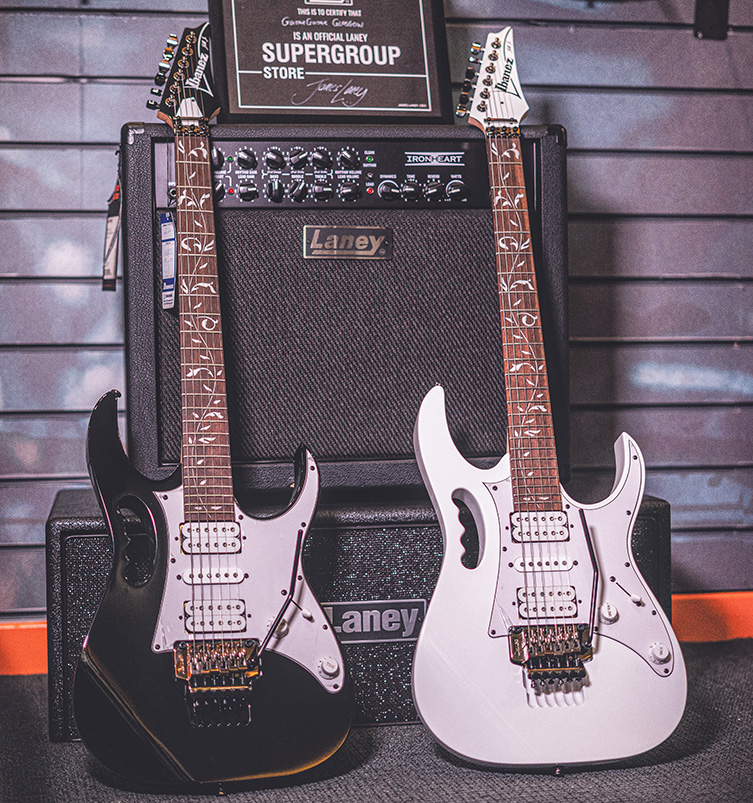
At its core, the JEM served as the ultimate canvas for Vai's mercurial talents and eccentric artistic expression. Gone were any traces of the simple, hot-rodded S type guitar of his ‘Green Meanie’ days with Frank Zappa and David Lee Roth, and in walked striking new aesthetics like the monkey grip handle, Lion’s claw trem recess, Tree of Life fretboard inlay and the final 4 frets scalloped ala Yngwie Malmsteen. All of this reflected Vai's penchant for the unconventional and supported his uncompromising pursuit of maximised playability. Such individualistic flourishes, while inspired, were relatively niche for the market.
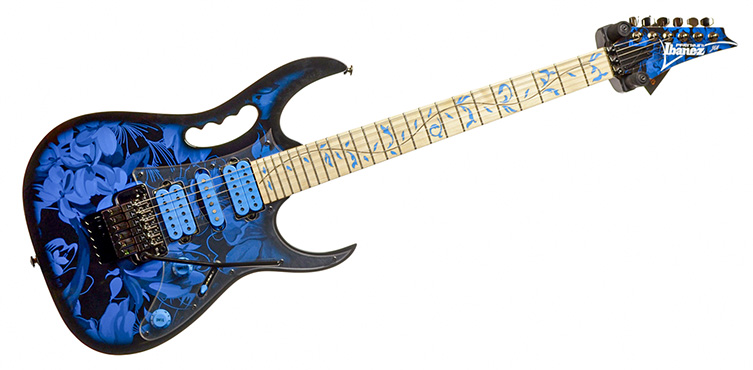
Time has proven the JEM to be one of the world’s best-selling signature guitars, but in the mid 80s, Ibanez felt like a slightly less off-the-wall approach would attract a bigger audience.
Recognising this detachment between the JEM's outer flourishes and its pioneering foundational elements, the luthiers at Ibanez undertook a strategic deconstruction. They isolated the signature components that empowered the JEM – the smooth "Wizard" neck profile, the elegant and sharp double-cutaway body, the H-S-H pickup configuration, and the finely-calibrated trem system. What emerged was the basis of the legendary RG550.
Ibanez effectively translated the radical core of an elite signature model into a standardised electric guitar offering. The RG distilled and generalised the JEM’s advances, making those accessible to a new generation of shredders in a design with universal appeal & versatility. This, coupled with its focussed design ethos, cemented the RG as an essential embodiment of modern rock and metal guitar playing.
Let’s pop in the time machine back to that pivotal moment…
1980s Pioneering Design, Evolution of Shred
The 1980s witnessed a seismic shift in the world of rock and heavy metal guitar playing, born from the pioneering work of virtuosos like Vai, his old guitar teacher, Joe Satriani, Paul Gilbert and Jason Becker.
Ibanez had unveiled the RG series in 1987 and its radically modern design would fuel this revolution in shredding and technical proficiency. The first RG models, such as the iconic RG550, featured design elements that were considered heretical by traditionalists:
- slim, super-fast "Wizard" neck
- sculpted and contoured body
- double-locking tremolo system that allowed for extreme pitch bends and dive-bombs.

These features facilitated previously unattainable levels of speed, articulation and expression. In the hands of the emerging shredder guitarists, the RG became an extension of their musical ambitions, empowering them to execute aggressive alternating-picking runs, sweeping arpeggios, and whammy bar histrionics with unparalleled dexterity. The RG solidified its place as the preeminent instrument for this new wave of virtuosic rock.
Key features of the original RG550 included:
- Basswood body
- Thin maple neck
- Double locking Floyd Rose style tremolo bridge
- Ibanez Vintage pickups (American designed)
- Dot fretboard inlays
1990-2000 Extended Range Revolution
As the 1990s dawned, Ibanez expanded their RG line to include 7-string and baritone models (again taking Vai’s signature 7 string Universe model and creating everyman versions). These extended range guitars opened new melodic and rhythmic possibilities for adventurous players. The lower-tuned 7-strings granted access to previously unexplored depths of chunky djent-style riffing and dense, extended chord voicings. Conversely, the baritone scales unlocked an expansive world of dynamics – the ability to seamlessly transition from thunderous low-end grooves to lengthy soaring melody lines.
At the forefront of this extended range revolution were pioneering bands like Korn and Meshuggah. Their decidedly modern, down-tuned, and groove-centric sound palettes demanded instruments capable of projecting those weighty tones with cutting presence and sustain. The Ibanez RG series suited these artists perfectly.
The 6 string RG went through some changes too. In 1990, the volume pot was repositioned and pickup logos were updated. The original RG550 was discontinued after 1994, with a new version introduced in 1997. A rosewood fingerboard variant, the RG550-R, was available in some regions in 1995-1996.
2000 - Modern Metal Dominance
With the new millennium, metal grew increasingly intricate and technically demanding, fusing wild polyrhythms and dissonant melodicism. Extending its reputation, the RG emerged as the preeminent guitar for these blistering new styles. From the staccato riffage and unorthodox time signatures of Djent architects Animals as leaders adopting models like the 8 string RG228, for instance.
The RG’s distinctive aesthetic graced stages and videos worldwide in the hands of genre-spanning artists. From Kiko Loureiro and Chris Broderick's searing neo-classical mastery with Megadeth, to Munky's neck-pickup crunch anchoring the rhythms of Korn, the RG's capabilities defied boundaries.
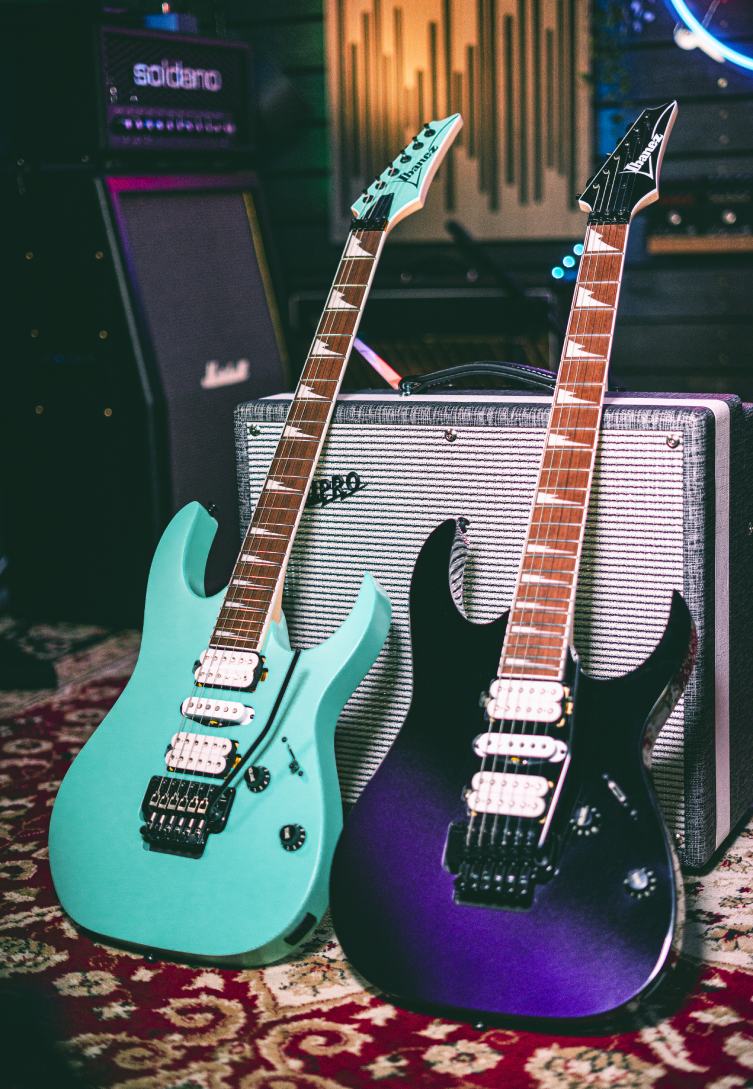
The Quest for Perfection: J Custom Models
Having achieved widespread success, Ibanez focused their sights on elevating the RG to the realm of boutique-level instruments. Drawing upon decades of expertise, their Japanese luthiers undertook a quest to build the definitive versions of this iconic instrument: The J. Custom series. With an uncompromising pursuit of perfection and meticulous artisanship, the J. Custom luthiers built premium RG guitars which distilled the essential elements while implementing cutting-edge design refinements.

With an insistence on incremental improvements through rigorous prototyping, each component was optimised for elite performance. From the precise fretwork and immaculate finishing to the calibration of the tremolo arm, no detail is spared scrutiny. Implementation of premium tone woods and proprietary hardware made the J.Custom the new platinum standard for the RG series.
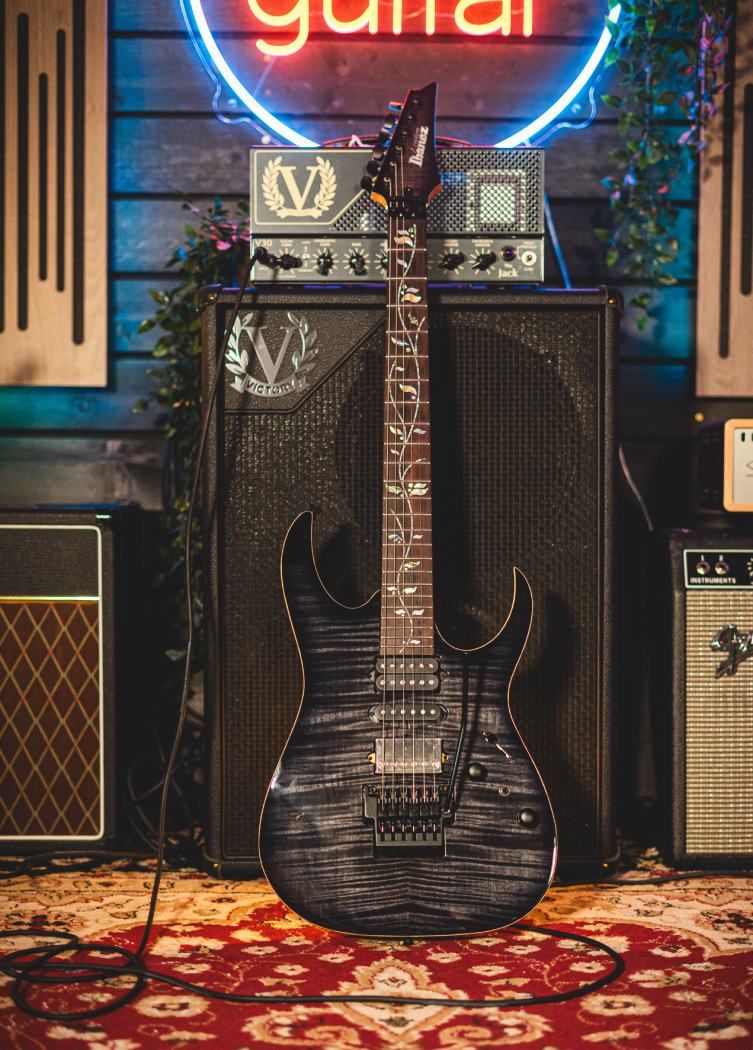
The Secret to Its Success: Unique Key Features
HSH Configuration
At the core of the RG's tonal versatility lies the HSH pickup configuration of humbucker single-humbucker. This arrangement - taken from the JEM - provides players with a wide selection of tones. In addition to the roaring humbuckers, engaging the middle single-coil pickup alone evokes a chimey, glassy tone. The very earliest RGs began with a set of Ibanez developed pickups and this evolved to DiMarzio Air Norton & Tone Zone as the main classic pairing. Nowadays, you’ll also find Fishman Fluence pickups entering the fold – along with some classic Ibanez Infinity pickups featuring on more affordable models.
Wizard Neck
Undeniably, one of the standout features that propelled the RG into its vaunted status is the "Wizard" neck design. This thin, flattened, and remarkably playable neck profile allows effortless speed and unimpeded dexterity for even the most committed shredders. The slender depth (around 17-20mm) and flattened curved radius (400mm or greater, which is around 15.7 inches) put the player's hands in an optimised position for rapid runs, wide stretches and other intricate fretboard movements.
By minimising substance and eliminating bulky shoulders, the Wizard neck facilitates unfettered mobility across the full range of the fretboard. This free span of motion ensures zero choking or fretting out when executing complex legato phrases or demanding multi-scale sequences.
Additionally, the sleek satin or oil-finished back of the Wizard neck contributes a fast, frictionless response that more traditional lacquered necks cannot match. Combine that frictionless speed with jumbo frets, and you have an unprecedented degree of playing articulation.
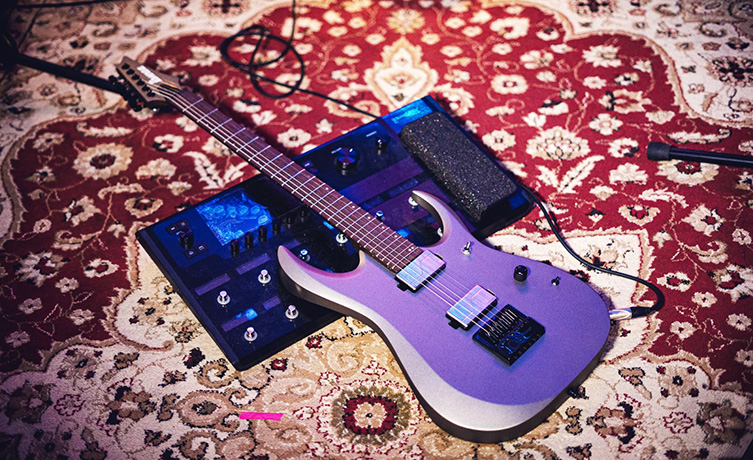
Sculpted Body Design
While the Wizard neck provides the playability, the sculpted body design of the Ibanez RG series embodies a striking visual - and ergonomic - identity attuned to the needs of modern guitarists. From the double-cutaway bevels that grant unfettered access to the highest frets, to the deep belly-cut carving that contours snugly to the player's form, every line has a rational purpose and can be traced back to the JEM’s original body hugging contours.
The RG's unmistakable body shape has become emblematic of the model's progressive pedigree. Its ergonomic benefits have now been widely accepted and emulated across the industry, yet, the Ibanez original will always be revered as the pioneering benchmark.
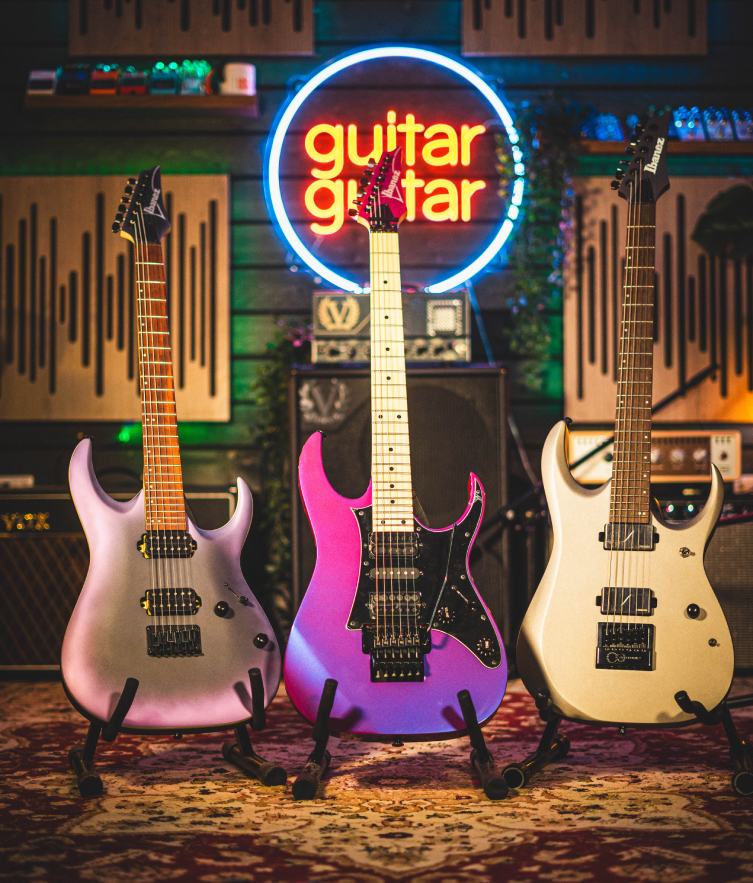
Industry-Leading Floating Tremolo
Central to the technical capabilities of the Ibanez RG is its innovative double-locking tremolo system. With roots tracing back to the influential Floyd Rose design, the Edge and Lo-Pro Edge have evolved into industry-leading tremolos that deliver unprecedented tuning stability and dynamic expression from the vibrato arm. These double-locking, floating tremolo designs effectively decouple the strings from their anchor points, allowing for dramatic pitch fluctuations in both directions while maintaining flawless intonation and tuning when returned to zero pitch.
Moreover, these double-locking systems incorporate a degree of micro adjustability. Players can calibrate precise intonation and string action preferences to achieve their ideal balance of precision and playability.
Players know that they can trust their Ibanez trems to stay in tune and that empowers players to perform the most extreme whammy abuse or subtle vibrato stylings with total confidence.
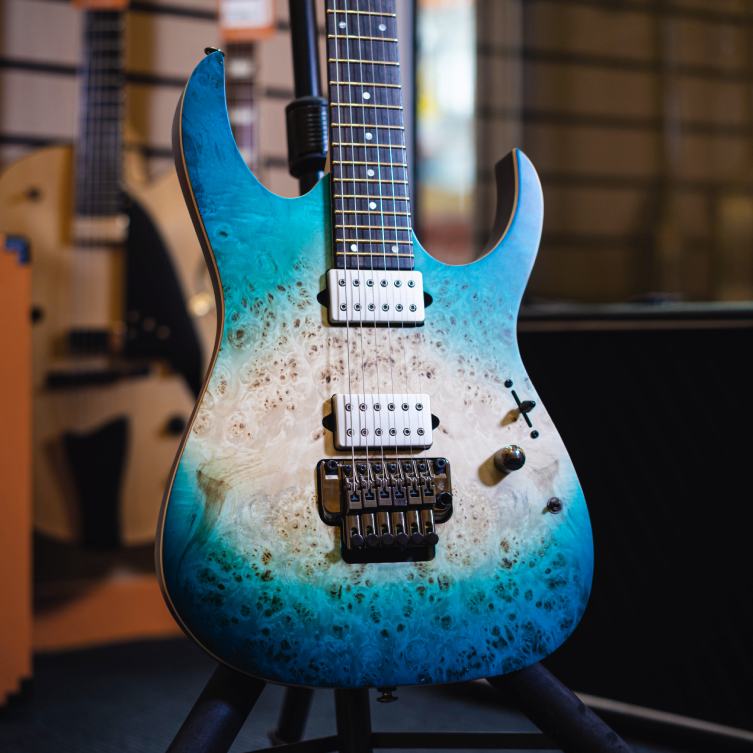
Bold Aesthetics
Visual boldness is a significant element of the Ibanez RG’s identity, and cannot be overlooked. The RG silhouette itself is a radical departure from the conventional at the time – its sharp bevels, elongated horns, and exaggerated curves project an unmistakable edginess attuned to the alternative music genres it was designed to serve. Colour options further amplified this rebellious spirit, with daring original finishes on the original 550 including Desert Sun Yellow and Laser Blue. Ibanez have since acquired a reputation for visual flare and innovation – from flip flop metallic finishes to desert island stains and the amazing Cosmic Shadow finish!
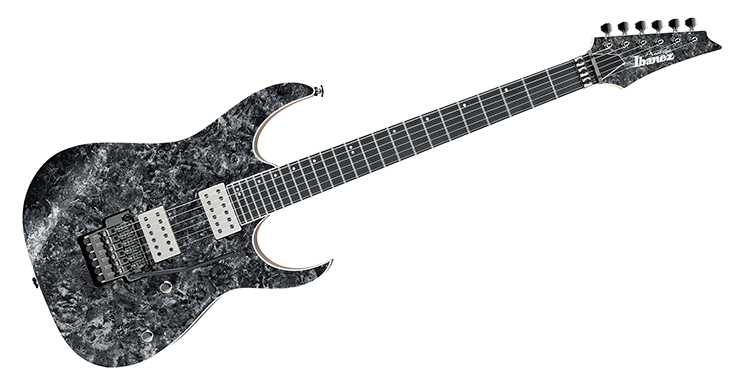
Beyond mere image, this willingness to depart from established guitar designs also manifested in functional purpose.
Now and Forever
Nowadays, Ibanez continues creating innovative instruments which not only fit the demands of players from the periods we’ve mentioned, but serve today’s players too. 7 string, 8 string, Multiscale and headless guitars are all available in a number of variations from Ibanez. In terms of the RG itself, here are some of the places you’ll find exciting models within the current Ibanez catalogue.
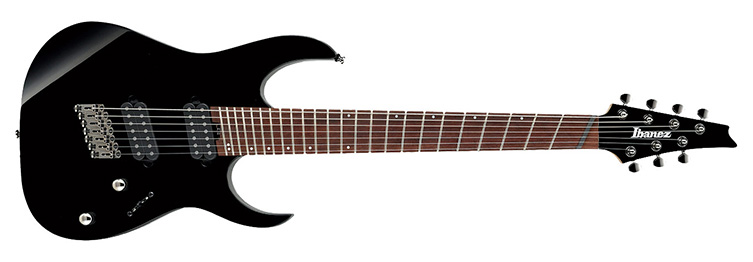
The Genesis collection offers today’s player a chance to own a brand new version of the original RG550. Utilising the same design and styling of the 1987 original, the Genesis 550 is paired with precise construction and Japanese craftsmanship. This series is a tribute to Ibanez’s past, delivering the same paradigm shifting features and heavy-hitting performance of the original RG, and including those inimitable colours like Desert Sun Yellow!
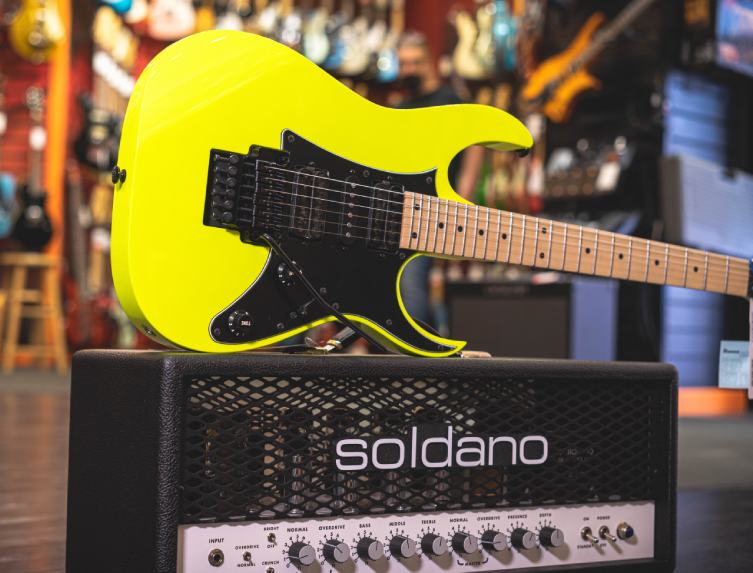
Iron Label RG’s have metal and nothing but metal in mind. These are the heaviest-hitting metal axes Ibanez have ever designed. Current models feature a Nitro Wizard neck – just as fast as classic Wizards but with added road-tested durability. Whether it's a 6, 7, 8 or 9- string, every Iron Label axe is equipped with American-made EMG or DiMarzio pickups. Purposefully spartan in aesthetic, every feature onboard contributes directly to skull-crushing tone.
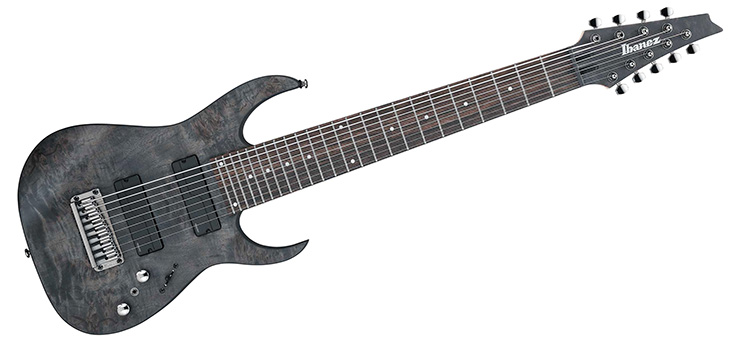
The GIO series was developed for players who want Ibanez quality in a more affordable package. Not only do they look and (arguably) play better than everything else in their price range, but their rigorous inspection, set-up and warranty is the same as Ibanez's more expensive models. Ibanez are known for building value into their guitars, and these entry level GIO models go above and beyond in that sense.

While retrospective nostalgia can cast doubt on once-revolutionary designs, the Ibanez RG's aesthetics have definitively entered the canon of iconic guitar art. Simply put, the RG series didn't just facilitate musical innovation – it embodied the very ethos of breaking tradition and redefining excellence.
Click to View our Ibanez RG Selection



